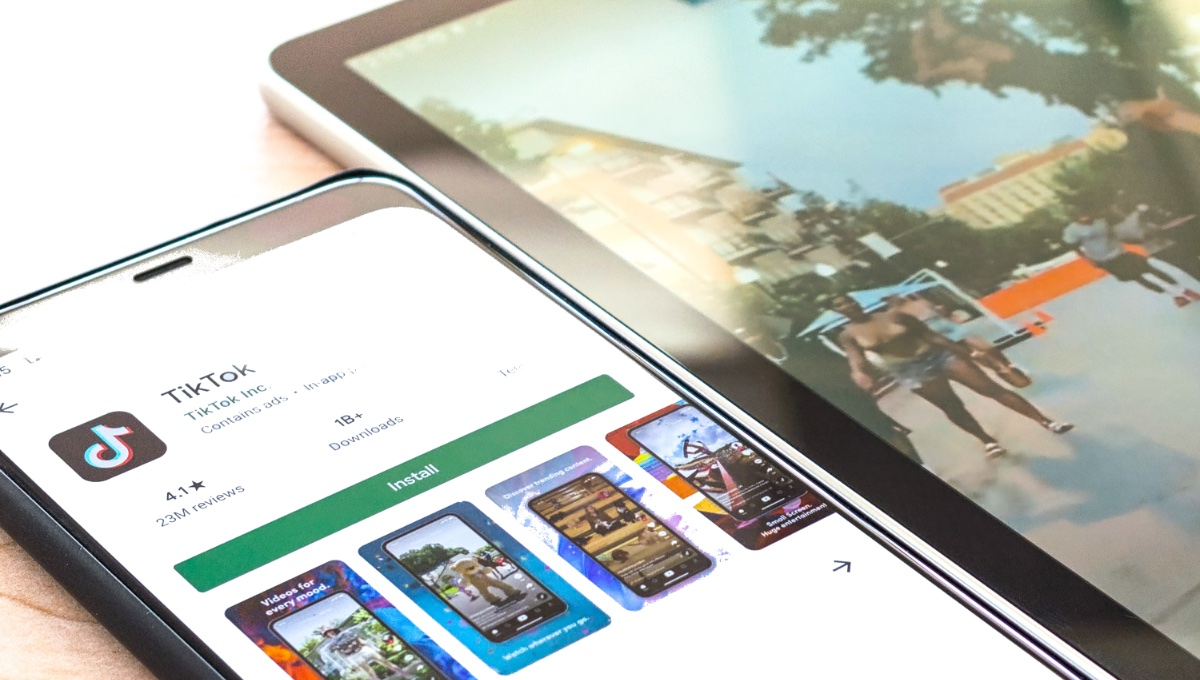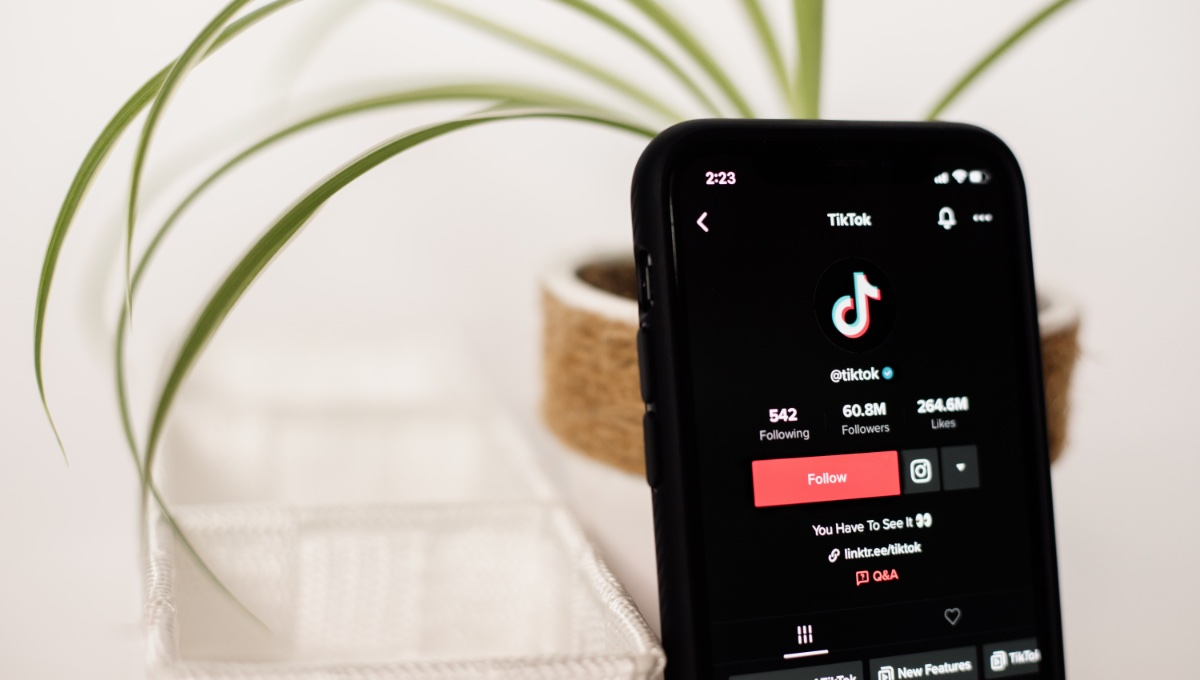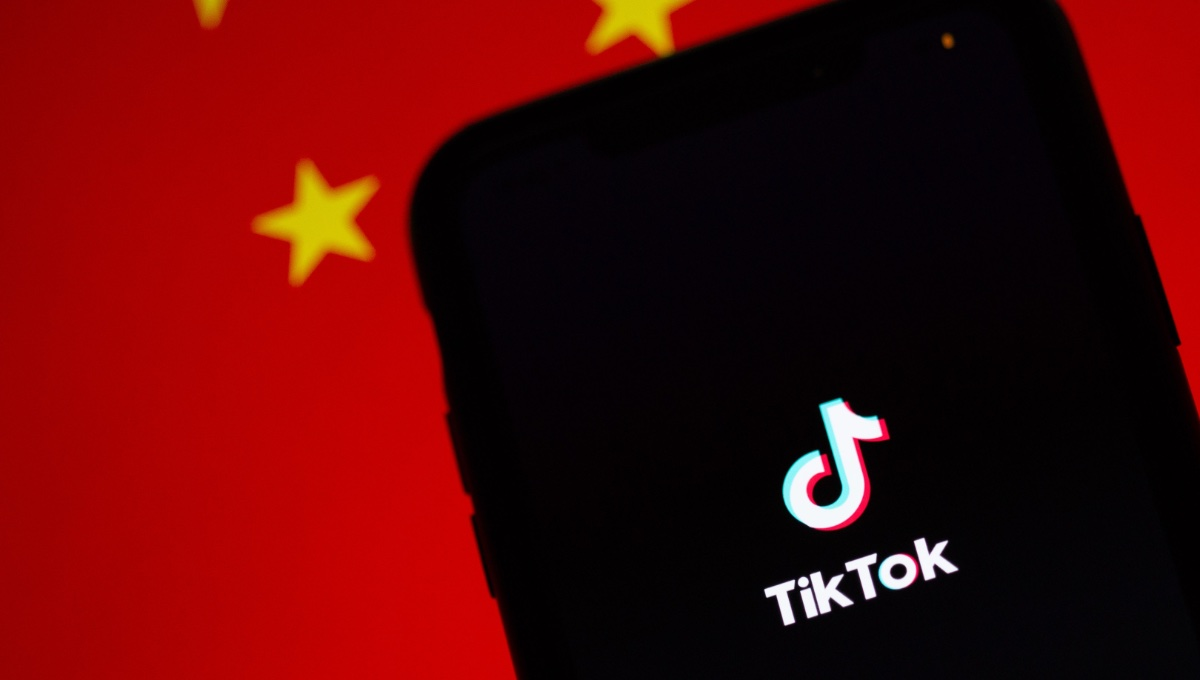What draws people to TikTok? From our article, you will find out why people are massively addicted to this social network and whether it is worth sounding the alarm.
Content:
1. Some statistics
2. Generation Z chooses TikTok
3. Why it's easy to get stuck on TikTok
4. How teenagers get hooked on TikTok
5. One step away from addiction
6. Why millennials don't like TikTok
7. Summing up
The social network TikTok offers to plunge into the carefree world of funny videos, parodies and dances. The number of its users has already exceeded 1 billion and continues to grow every day.
Some statistics
The American Pew Research Center claims that juvenile users on average spend 5 hours 30 minutes daily with their gadgets. Most parents (65%) are concerned that their child spends too much time on the Internet. The lion's share of this time falls on social networks.
Specialists of the Kyivstar telecommunications company have analyzed which social networks are the most popular among its subscribers. TikTok turned out to be the leader in the duration of the visit. On average, Kyivstar subscribers spend the most time here – 88 minutes daily. However, every 10th user spends more than 4 hours a day in this application.
TikTok still lags behind such giants as Instagram and Facebook in terms of the number of registered users, but this does not prevent the service from maintaining the status of the most visited social network in the world. At the end of 2021, it managed to overtake the Google search engine in this indicator. Analytical company Insider Intelligence predicted that by the end of 2022, about 82% of Internet users in the world will look at TikTok at least once a month.
Generation Z chooses TikTok
Generation Z (“Zoomers”) is a term that conventionally refers to people born between 1997 and 2012. This generation saw the rapid development of digital technologies. Its representatives almost from the cradle were surrounded by mobile phones, tablets, laptops and other gadgets. They simply cannot imagine life without the Internet. Their reality is a combination of the virtual and physical worlds, which is why they feel very comfortable on TikTok.

Half of the entire TikTok audience is boys and girls aged 16-24. What attracts young people there? The secret of popularity is simple: the clip format for presenting information, which matches the type of thinking, and the speed of content change. The maximum allowable length of a video on the social network is only 3 minutes. At the same time, most videos fit in 15 seconds. Zoomers find it easier to absorb content in this mode, since it can be difficult for them to concentrate on one thing for a long time.
Despite the fact that many consider TikTok a social network "for youngsters", it is gradually "growing up". Now 60% of its audience is already made up of people aged 18-35 (data as of January 2021). The same thing happened at one time with Instagram: in the first years after the launch of the network, it was very popular among very young users, and today the age of its most active audience is from 25 to 34 years old.
Why is it easy to get stuck on TikTok?
TikTok content is short vertical videos shot on an iPhone or other smartphone and uploaded to the social network. A huge library of musical compositions allows you to sound videos with popular tracks. Agree, to demonstrate to everyone how cool you are doing the “moonwalk”, it is best under Michael Jackson’s “Billie Jean”. The most popular topics for video are dancing and lip-synching. For the design of videos, TikTok successfully borrowed from Instagram the idea of using a variety of visual effects, masks and filters that can be applied directly to the image.
The space for creativity and rampant fantasy here has no boundaries. Many users, in pursuit of millions of views and likes, strive to shoot something in order to make tiktokers look at it without stopping. And some really do. And the rest are ready to hang out on the social network for hours, looking at what others have filmed.
TikTok entices not only with interesting effects and filters, ideas and plots, but also with numerous catchy challenges. For example, one tiktoker sets a certain theme (performs a bunch of choreographic movements invented by him), and hundreds of thousands of other users repeat this and post it on the social network with the same hashtag. Such competitions allow you to get millions of views. By the way, it was thanks to dancing that American Charlie D'Amelio, the most popular young TikTok star, managed to gain 59.3 million subscribers and over 4 billion likes in a year.
The insidiousness of artificial intelligence
According to statistics, 90% of TikTok users browse the social network daily, and 9 out of 10 look there several times a day. Why does the hand reach for the phone to scroll the video feed over and over again? Are the rumors that TikTok is a digital drug really true?
Do not worry, the application does not introduce users into a hypnotic trance. The reason for the desire to visit the social network more often is much more prosaic. The fact is that the developers have made the feed as attractive as possible for young people, taking care of filling it with entertaining, funny and light content. The chief executive officer (CEO) of the marketing agency Inseed Marketing, Dmitry Kudinov, notes that the Chinese have implemented artificial intelligence technologies in TikTok to track user actions. The system sees what he likes and comments and how long he pays attention to certain videos. AI can recognize both positive and negative reactions. Thus, a kind of dossier is collected for each tiktoker, on the basis of which the application forms a personalized feed.

With TikTok, you don't need to purposefully search for something interesting, like, for example, in the Facebook feed. You don't have to put in much effort here to enjoy it.
Algorithms work
The algorithms that underlie social networks affect a person not only on a psychological, but also on a physical level. They are quite capable of influencing the brain and hormonal system. American scientists Terry Robinson and Kent Berridge managed to prove that social networks are a stimulant for the release of dopamine (it is also called the hormone of pleasure). It is curious that its maximum release occurs when a person expresses his opinion, and does not listen to or read someone else's.
If something needs to be done, the "smart" brain will always choose the path of least resistance. Why change the established connections between neurons? Therefore, it is easier for people to perform tasks according to familiar patterns. Psychotherapist Maria Fabricheva claims that it is precisely this specificity of the brain that TikTok “took into circulation”. After all, the user does not even have to scroll the feed in search of interesting content - the funniest and trendiest videos themselves catch his eye.
On the one hand, this seems to be good for the brain, the psychotherapist believes. However, in reality, a person stops in development. And if it does not develop, it inevitably degrades. Let's illustrate this with the example of TikTok. Perhaps the user dreamed of becoming a singer like Enrique Iglesias, but he was too lazy to study vocals for a long time. Shooting video, he seems to achieve his dream. And our subconscious mind does not care whether the desired happens in reality or is its surrogate.
Shock content
Challenges on TikTok vary from the most harmless to the vulgar and even life-threatening. Each of them pulls you deeper into the social network. Having participated at least once in one of them, it is difficult to stop later. Millions of users, for the sake of dubious popularity, are ready to voluntarily become "heroes" of such videos, because of which it would be a shame before.
One of the sensational Tiktok challenges at the time is PeeYourPants. The task was to urinate in your pants while standing in front of a mirror, film the process and post it on the social network with the appropriate hashtag. The initiator of this strange challenge was 19-year-old American comedian Liam Weier from Kansas. He claimed that he wanted to show the pointlessness of viral videos on social networks in this way, but was shocked that people took him completely seriously. Weyer's "shameful" video scored 2 million views. Behind him, "wet business" without a drop of embarrassment was repeated by hundreds of other users from around the world.
Psychotherapist Maria Fabricheva believes that people who film and share such shamelessness are at this moment in a kind of trap of consciousness. When a person urinates in his pants at home, in the bathroom, no one else sees this in his reality. And it even seems to be true: there really is no one around. Moreover, the tiktoker is sure that everything is not happening for real, because he does not do it in the central square. This is where the trap mechanism works - the shame that he would have experienced if he had peed on the street is turned off.

It cannot be ruled out that in childhood, participants in such challenges had episodes when they were scolded or punished for such misconduct. And here they do the same, but they are not shamed. They get the exact opposite reaction - they get thousands of likes, they write approving and enthusiastic comments, they lift them up on a popularity pedestal. In the mind of an adult, the virtual world is strongly associated with something fake, "toy". And this pushes him to turn into a child who can easily and naturally do any stupidity in order to amuse others and laugh himself.
How teenagers get addicted to TikTok
Psychologists say that modern teenagers perceive new information mainly through the visual channel. That is why they prefer video services, rather than text social networks, where their parents usually hang out. In addition, TikTok stories are very short - usually less than a minute. It's easy to lose track of time while watching this video popcorn. For example, someone posted a video about "fixing friendship" by lowering the clasped hands (the author of the video and his friend) into the toilet. Another option: the girl has learned some interesting dance moves and invites everyone to see how cool she does them to the music. Anyone who wants to can repeat after her.
In order to shoot and upload such stories, as they say, you don’t need a lot of intelligence. You do not need to train for months and years to create one video. To perform some simple actions that can be quickly reproduced and immediately show it to millions of viewers - all this gives a teenager reason to consider himself capable, talented, witty. Some even begin to feel superior to less popular peers on the social network.
Self-expression and popularity among peers
The 12-year-old schoolgirl shared that many people in her class are on TikTok – not only watching the feed, but also uploading their videos there. As soon as she signed up and started posting funny videos about the life of her cat, half of her classmates signed up for her account. Thanks to her activity on the social network, the girl struck up friendships even with those with whom she had not dared to talk at all before.
Family psychologist Elena Beletskaya believes that reportage videos are one of the most accessible ways of socialization and self-expression. Communication for teenagers has always been, is and will be in the first place. By the way, representatives of previous generations did essentially the same thing, only they didn’t have the Internet and social networks. They crowded under the stairs, gathered in groups near garages, in the yards of apartment buildings: they listened to music, fooled around, showed tricks. And now all this has been transferred to the digital world. Watching other people's videos on TikTok and posting your own is one of the forms of modern communication.
Imitating an idol
The older generation is perplexed, why imitate someone, if the price is just completely different - uniqueness and originality. Turns out copying isn't so bad after all. Psychologists refer to imitation as a form of learning. And it's true: if a person does not know how to do something, he watches how another does it, and thus learns. Where and from whom can you study now? Roughly outline the circle of subjects and objects: parents, school and hobby groups or sports sections. Today, however, this is too little. The media have long lost their leading role, and social networks have come to the fore in their place. For example, if in the same TikTok a teenager's idol made some special feint (gesture, facial movement, jump), the child will definitely repeat it. Of course, this will not add intelligence, but the essence is completely different.
A teenager acquires a certain skill (even if it is to make his eyes pop in a special way) and at the same time closes his need to belong to a group of admirers of his idol. In addition, for acquiring even such a primitive skill, he receives an encouragement in the form of hundreds of likes. With a sharp decrease in activity in the offline world (for example, under quarantine restrictions during the COVID-19 pandemic), each such “plus” gives another portion of the hormone of joy.

For the sake of fairness, let's say that moms and dads of "zoomers" at one time also imitated their idols with might and main. They will surely remember the Titanic T-shirt craze, Madonna-like makeup, Britney Spears-like hair, Michael Jackson's moonwalk, school yo-yo competitions, and so on.
One step away from addiction
When a teenager is seriously addicted to TikTok and “hangs” there almost all his free time, parents start sounding the alarm and ask psychologists if it’s dangerous. For example, the mother of a schoolgirl was forced to turn to a specialist because of fears for the psyche of her daughter. She said that her child sits on this social network for a long time every day and is constantly in an excited state: either laughing at something, or falling into thoughtfulness. And family psychologists say that such anxiety is not groundless.
Scrolling anything (in this case, videos) causes an attention loop. On the one hand, this is a kind of rest, a variant of switching activities. Not all the time to sit at the textbooks. But on the other hand, it can provoke pathological dependence. If a teenager also has problems with self-esteem, the risk of getting seriously addicted to TikTok and subsequently “earning” a real addiction increases significantly.
Why Millennials Don't Like TikTok
Millennials (Generation Y) are conventionally called people who were born between 1981 and 1996. They are well versed in all modern technologies, but their childhood passed without the Internet and social networks. Many millennials do not recognize TikTok, considering it a frivolous network where "youngsters fool around." Let's try to figure out why they are so skeptical.
First of all, the very concept of this social network breaks the dogmas and rules that millennials are used to living by. Just think: the most ordinary tiktoker made a video lasting 15-20 seconds with strange movements or just grimaced at the camera - received millions of views, worldwide fame and stunning earnings (a vivid example is Bella Porch and her famous “M to the B” lipsync, which brought She's about $100,000. The millennial, on the other hand, has to spend almost the entire day at work, and he receives many times less at much greater mental and physical costs.
Most of the most successful tiktokers are 16-22-year-olds who often do not even have a higher education. This fact also angers millennials, because they have no idea how to earn decent money without serious training. Although it is possible that they are simply jealous.
The third reason for the skepticism about TikTok looks quite logical. It's hard to find really useful content here. The authors of informative videos, in order to keep up with the times and somehow interest the viewer, are forced to adapt to general trends. For example, a physics teacher opened a TikTok account and explains complex rules and laws in simple terms in short videos. Typically, such videos gain very few views and quickly sink into digital oblivion. Meanwhile, body movements, funny pranks, parodies and challenges are getting into trends.
Summing up
How has the Internet formatted our consciousness and what will appear after TikTok? Most likely, our children will receive answers to these questions. Although even today it is already clear that social networks will continue to influence a person and this process cannot be stopped.
Perhaps in 8-10 years TikTok will suffer the fate of Instagram - its audience will grow older, and the digital world will be replenished with a new application developed on the basis of the latest technologies. It is worth using this social network or not - everyone must decide for himself. The main thing is to take into account its impact on the younger generation and be aware of all the risks associated with it.
Do you want to achieve your goals in business, career, and life faster and better? Do it with SaveMyLeads – a tool that will save you from the routine work, and free up additional time for realizing your goals. Test the capabilities of SaveMyLeads for free and enjoy the effectiveness of this tool.
